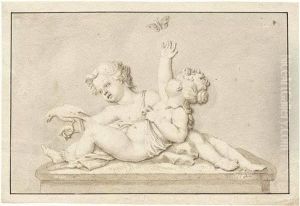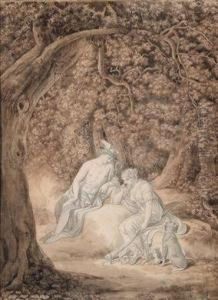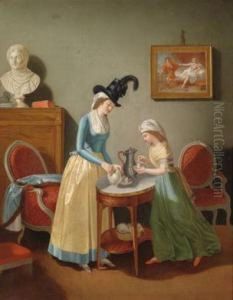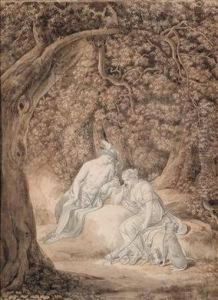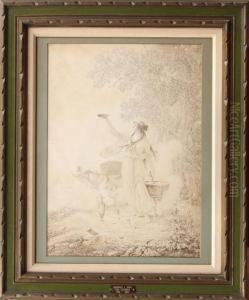Johann August Ii Nahl Paintings
Johann August II Nahl, born in 1710 in Berlin, was a prominent German sculptor and artist of the 18th century. His career spanned several decades during which he contributed significantly to the development of late Baroque and early Rococo styles in German sculptural art. Nahl's family was deeply entrenched in the arts; his father, Johann August Nahl the Elder, was also a notable artist, ensuring that Johann August II was immersed in an artistic environment from an early age. This early exposure to art and craftsmanship profoundly influenced his career path and artistic development.
Nahl initially received his artistic training from his father, and later, he traveled extensively across Europe, particularly in France and Italy, where he studied classical sculpture and was influenced by the works of contemporary European artists. His travels and studies played a crucial role in shaping his artistic style, which was characterized by dynamic compositions, emotional expressiveness, and intricate detailing, hallmarks of the Rococo movement.
Upon returning to Germany, Nahl settled in Kassel, where he became a central figure in the local art scene. His works from this period include a mixture of public monuments, decorative sculptures for parks and palaces, and funerary art, showcasing his versatility as an artist. One of his most renowned works is the tomb of Maria Magdalena Langhans in Hindelang, which exemplifies his skill in creating emotionally charged, lifelike representations in marble. This particular piece is often cited for its dramatic realism and the tender portrayal of its subject, reflecting Nahl's mastery over the medium and his ability to convey deep sentiments through his art.
Throughout his career, Johann August II Nahl's contributions to the art world were recognized by various German princely courts, and he received numerous commissions that allowed him to leave a lasting legacy. His work not only reflects the artistic trends and stylistic shifts of his time but also showcases his personal evolution as an artist. Nahl's influence extended beyond his lifetime, impacting the development of sculpture in the German-speaking regions of Europe. He passed away in 1781 in Kassel, leaving behind a rich body of work that continues to be studied and admired for its artistic significance and historical importance.
